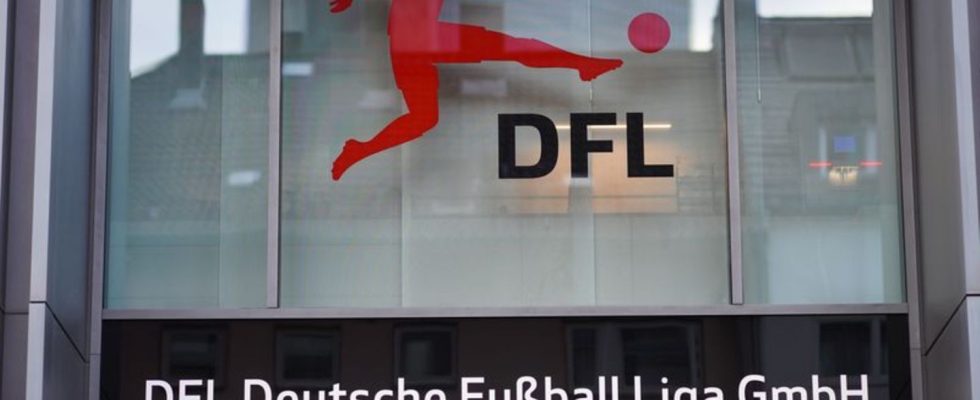German football professional leagues
Lower salaries and more sausages: The DFL report
The logo of the Deutsche Fußball Liga GmbH (DFL) at the entrance to the DFL headquarters in Frankfurt/Main. photo
© Frank Rumpenhorst/dpa
For the first time since the beginning of the pandemic, the German professional football leagues are on the up again financially. However, the new media contract finally negotiated in the Corona year is slowing down the upswing.
Things are looking up again for Germany’s professional football clubs. After tough Corona years with major financial losses and some restrictions, the 36 clubs in the Bundesliga and Bundesliga 2 earned 4.48 billion euros in the 2021/22 season, around ten percent more than in the previous season.
This was announced by the German Football League (DFL) in its economic report. However, the level that the clubs achieved in the last season without Corona has not yet been reached again. At that time, 4.8 billion euros had been redeemed.
“In view of the available figures, one can speak of a slight economic recovery, but by no means an all-clear signal. The Bundesliga and Bundesliga 2 are still a long way from the pre-corona level,” said Hans-Joachim Watzke, spokesman for the DFL Presidium. Three points that stand out in the DFL economic report:
Lower salaries
Sales are increasing, but salaries are falling. In the Bundesliga, around 1.47 billion euros were paid to players in the past season – that’s almost 100 million euros and 6.3 percent less than in the previous year, when the top German division was around 1.57 billion euros lay. The personnel expenses ratio in the Bundesliga fell to 40.7 percent and is thus below the other top leagues in Europe.
According to a report by the European Football Union UEFA from February 2023, the personnel expenses ratio in the English Premier League, the Italian Serie A, the Spanish Primera Division and the French Ligue 1 is six to 28 percentage points higher. In the 2nd Bundesliga, the salaries themselves have increased. As sales grew significantly faster, the rate for spending on the professional team fell to a low of 30.2 percent.
Media minus
The season evaluated in the DFL report is the first with the new four-year media contract. While an average of 1.16 billion euros was distributed per season in the previous period, it will be 1.1 billion euros from 2021/22. “We achieved a decent result, which is impressive in these times,” said the then managing director Christian Seifert about the result at the time, which was negotiated in the middle of the first year of Corona.
The DFL report that has now been published also shows the decline. The key figures for media exploitation fell noticeably compared to the previous season, both in absolute terms and proportionally. The minus is offset by the significantly increased game revenue due to the return of spectators to the stadiums after the restrictions caused by the pandemic were partially lifted.
The possible partial sale of media rights to financial investors should now help provide fresh money for the clubs. “In my view, a league partner could also be an additional protection for 50+1. Because: A well-functioning DFL is good and important for all clubs involved. The clubs receive their respective share of the distributions, and a rat race This tends to prevent investors at club level,” said DFL supervisory board member Rüdiger Fritsch to “kicker”. The fans are critical of the step and are planning protests.
Huge increase in employees
The calculation is simple: more fans, more sausages. After no spectators were admitted for long stretches of the 2021/22 season due to the corona, the increase was not only noticeable financially. According to the report, the number of people employed “directly and indirectly” in the two top German divisions has risen significantly. The DFL reported an increase of almost 85 percent from a good 26,000 to a good 48,000 people.
While the number of licensees and subsidiaries remained similar, the number of so-called indirect employees increased rapidly. Catering companies had almost eight times as many staff as in the previous season, the security and guard service (almost four times as many) and the sanitary service (around three times as many) had to increase significantly compared to the game year with an extremely large number of ghost games.
Announcement on the report DFL economic report Announcement by the Dortmund fans

